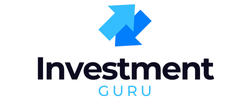Debt consolidation can feel like a lifeline when you’re juggling multiple credit cards, personal loans, or other high-interest balances. By rolling everything into one payment—often at a lower interest rate—it seems like a smart way to simplify your finances. One of the most common tools people turn to is a home equity loan, which lets you borrow against the value of your home to pay off existing debts.
At first, this option can look attractive. Home equity loans typically carry lower interest rates than credit cards, and the fixed payments make budgeting easier. But there’s a major trade-off: you’re putting your house on the line. If you fall behind on payments, you could risk foreclosure. For many homeowners, that makes the stakes much higher than with unsecured debt.
There are other risks, too. Extending your repayment term may reduce your monthly payment but increase the total amount of interest you pay over time. Closing costs can also eat into your savings, and if property values fall, you could end up owing more than your home is worth. On top of that, using a home equity loan for debt consolidation doesn’t address the root cause of overspending—meaning you could end up back in debt with less equity to fall back on.
Before using a home equity loan to consolidate debt, it’s important to weigh these risks against the potential benefits. For some, it can be a powerful tool to regain financial stability. For others, it may create new problems down the road.
In this article, we’ll outline the main risks of using a home equity loan for debt consolidation and offer tips to protect yourself if you decide to go this route. With the right planning, you can make an informed choice that strengthens your financial future instead of putting it at greater risk.
Table of Contents
What Is a Home Equity Loan for Debt Consolidation?

A home equity loan allows you to borrow money against the equity in your house—equity being the difference between your home’s market value and the amount you still owe on the mortgage. Some homeowners use these loans to consolidate high-interest debts, like credit cards or personal loans, into one fixed payment with a potentially lower interest rate.
However, using a home equity loan for this purpose means you transfer unsecured debts into a secured loan. This increases the consequences of default: failure to pay can lead to foreclosure.
Major Risks of Using a Home Equity Loan for Debt Consolidation
1. Risk of Losing Your Home
The single greatest drawback of consolidating with home equity is collateral risk. Credit card debts are unsecured—defaulting affects your credit score but not your house. A home equity loan, however, directly risks your property. According to Consumer Financial Protection Bureau (CFPB), failure to pay gives the lender the right to foreclose.
2. Longer Repayment Periods
Debt consolidation via home equity loans may lower monthly payments, but this often extends your repayment term from a few years to 10, 15, or 30 years. You might pay less monthly but more in total interest.
3. Closing Costs and Hidden Fees
Home equity loans typically involve appraisal fees, origination charges, title fees, and closing costs that can total 2%–5% of the loan amount. These upfront costs can offset potential savings from consolidation.
4. False Sense of Debt Elimination
Many borrowers fall into the trap of thinking consolidation “pays off” their debt. In reality, it only restructures obligations. If spending habits don’t change, you risk running up new credit card debt while also paying off a home-secured loan.
5. Potential Drop in Home Value
If housing markets decline, borrowing against home equity can leave you “underwater”—owing more than the home’s actual value. This limits your ability to sell or refinance in the future.
6. Variable Interest Rates and Recast Clauses
Some home equity loans and HELOCs (Home Equity Lines of Credit) use variable rates. If rates increase, your monthly obligations could rise unexpectedly. Certain contracts also allow lenders to demand full repayment if equity falls drastically.
Comparing Home Equity Loan vs. Personal Loan for Debt Consolidation
| Factor | Home Equity Loan | Personal Loan |
|---|---|---|
| Collateral | Secured by your home | Unsecured |
| Interest Rate | Lower, often fixed | Higher, depends on credit |
| Loan Term | 10–30 years common | 2–7 years |
| Risk | Foreclosure risk if you default | Credit score and collections impact |
| Closing Costs | Yes, 2–5% | Minimal to none |
When a Home Equity Loan May Still Make Sense
Despite risks, a home equity loan could be useful when:
- You have stable income and are confident in repayment ability.
- Your home equity is strong—typically lenders require at least 15%–20% equity left after borrowing.
- You want a fixed interest rate, unlike credit cards or HELOCs.
- You use the consolidation as part of a strict, disciplined debt payoff plan.
Step-by-Step: How to Evaluate and Set Up a Home Equity Loan for Debt Consolidation
Step 1: Calculate Your Debt and Equity
Add up all current unsecured debts—credit cards, personal loans, medical bills. Compare it with how much equity you have by subtracting your mortgage balance from your home’s market value.
Step 2: Research Lenders
Contact at least 3–5 banks or credit unions. Look at APR, closing costs, loan terms, and flexibility. Use tools like Investopedia’s home equity loan guides for benchmarks.
Step 3: Understand Fees
Ask for a Loan Estimate document (required by law) before signing. Review origination costs and third-party fees. Decide if potential interest savings outweigh them.
Step 4: Apply and Submit Documentation
You’ll provide proof of income, tax returns, credit history, mortgage statement, and homeowner’s insurance. The lender will order an appraisal of your property.
Step 5: Closing the Loan
If approved, you attend a closing similar to a mortgage closing. You’ll sign legally binding documents confirming your home as collateral. Funds are usually disbursed within 3–5 business days.
Step 6: Implement a Debt Repayment Plan
Deposit loan funds, pay off all unsecured debts immediately, and commit to not adding new balances. Consider using apps like You Need a Budget (YNAB) or Mint to track spending. YNAB, priced around $14.99/month (after a free trial), gives you zero-based budgeting tools. Mint is free but offers paid upgrades for credit monitoring. Both integrate with your accounts and help enforce discipline.

Alternative Debt Consolidation Options Without Risking Your Home
Balance Transfer Credit Cards
Cards with 0% introductory APR offers can save thousands if you repay within 12–18 months. Setup costs are balance transfer fees of 3–5%. Best for disciplined short-term repayment.
Debt Management Plans (DMPs)
Nonprofit credit counseling agencies can negotiate lower rates with creditors, bundling your payments together. While they charge monthly fees (typically $20–50), they do not require collateral.
Personal Loans
Unsecured personal loans offer consolidation without risking foreclosure. Rates depend heavily on creditworthiness, but terms are shorter and fees lower than home equity loans.
DIY Acceleration with Avalanche or Snowball Methods
Free methods like Debt Avalanche (tackling high-interest balances first) or Snowball (paying smallest balances first) can accelerate repayment without new loans.

Best Practices to Minimize Home Equity Loan Risks
- Never borrow more than necessary; leave a cushion of home equity intact.
- Make automatic payments to reduce the chance of missing due dates.
- Avoid reusing credit cards after paying them off through consolidation.
- Create a detailed written payoff roadmap before signing paperwork.
- Build an emergency fund of 3–6 months’ expenses first, so one crisis doesn’t derail repayments.
Frequently Asked Questions (FAQs)
- Is a home equity loan a good idea for debt consolidation?
It can be if you have stable income and discipline, but risks include foreclosure and high fees. - What percentage of equity do I need to qualify?
Most lenders require you to retain at least 15–20% in your home after the loan. - How much can I borrow with a home equity loan?
Typically 80–85% of your home’s appraised value minus your mortgage balance. - Are interest rates lower on home equity loans?
Yes, usually lower than unsecured loans or credit cards, but sometimes higher than primary mortgages. - What’s the difference between a home equity loan and HELOC?
A loan is lump sum with fixed rate; a HELOC is revolving credit with variable rates. - Can I deduct interest from a home equity loan?
According to the IRS, interest is deductible only if funds are used for home improvements, not debt consolidation (source). - What happens if I sell my home with a home equity loan?
You must repay the home equity loan in full at closing before pocketing any proceeds. - Can I refinance out of a home equity loan later?
Yes, if your credit and equity remain strong, refinancing may consolidate again into your primary mortgage. - What credit score do I need to qualify?
Most lenders look for 620 or higher, but premium rates usually require 700+. - Is it safer to use a personal loan than a home equity loan?
Yes, because personal loans are unsecured—your home isn’t at risk of foreclosure.
Conclusion
Using a home equity loan for debt consolidation can feel like a lifeline, but it carries substantial hidden risks—especially the possibility of losing your home. Before moving forward, weigh alternatives like balance transfer cards, personal loans, or nonprofit debt management plans. If you do proceed, take careful steps: calculate equity, shop lenders, screen for fees, and commit to disciplined spending. Done responsibly, it can be part of a broader financial strategy—but without a solid plan, the risks outweigh the rewards.
Compare lenders side by side, talk with a certified credit counselor, and map out your payoff plan before signing. Your future financial freedom depends on today’s smart decisions.


